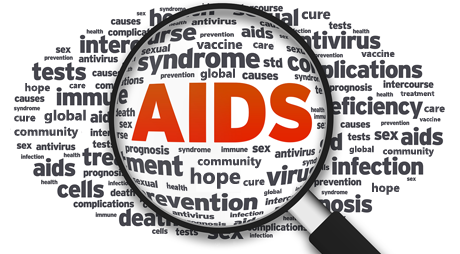
The ManicaPost

Catherine Murombedzi Health Correspondent —
THE theme for 2016 to 2017 World Aids Day is ‘Closing the tap on new HIV infections’.
If we continue to have new HIV infections then ending Aids by 2030 remains a pipe dream. In 2015 there were 54 000 new HIV infections in Zimbabwe. This number is too high to get relief as it shows that daily people are getting infected by the HIV virus. The main mode of the new infections is heterosexual.
The infections from mother-to-child have dropped significantly and soon we can see no new infections in the mother-to-child category, thanks to the Prevention of Mother-to-Child Transmission campaign.
In 2013 Zimbabwe adopted the Option B+ which states that any pregnant mother who tests HIV positive is placed on Anti-Retroviral Therapy (ART) with immediate fact for her good and the good of the unborn child.
This is also the same for breastfeeding mothers testing HIV positive, they are placed on immediate ART for the same benefits.
Option B+ has seen the rate of new HIV infections in children drop from a high of 30 percent a decade ago to less than five percent.
Dr Angela Mushavi, the National PMTCT director in the Ministry of Health and Child Care is pleased with the progress, but is not folding sitting on laurels.
“We have achieved success in lowering the mother-to-child transmission of HIV which now stands at less than six percent. We, however, are not folding our hands as we strive to achieve a zero in new infections in children. It is possible and we continue to urge all mothers to get tested for HIV,” said Dr Mushavi.
PMTCT programmes are funded by the Ministry of Health, local authorities, partners like the Elisabeth Glaser Foundation, (EGPAF) and many more. The partnerships have scored success and the tap on new HIV infections in the mother-to-child is closing with notable success.
The country is going through an economic crisis, but remains committed to the Abuja Declaration as seen by the domestic funding of Aids in Zimbabwe through the Aids Levy.
“In Zimbabwe over 800 000 people are on anti retroviral therapy against 1,5 million people living with HIV and Aids and we are working on ensuring that all who need treatment are afforded it,” said Vice President Emmerson Mnangagwa in Kwekwe on World Aids Day.
“Africa has recorded tremendous progress in ameliorating HIV and Aids effects, however, we should guard against complacency as a continent since we carry 70 percent of the global HIV and Aids burden,” said VP Mnangagwa.
With such a high number still to access ARVs, it is imperative that the tap on new HIV infections is closed. There are people already who need the life saving ARVs who are not able to get them and having new infections makes no sense at all.
Speaking to Charles Siwela, a youth who is an activist and advocacy champion on ending Aids by 2030 said no-one must be left behind. He went on to emphasise the importance of working together as no one man is an island.
“HIV and Aids elimination by 2030 and leadership and human rights cannot win the war alone without public and private partnerships,” said Siwela.
He said it was saddening to note that new HIV infections in young people continue to rise.
“It is saddening that new HIV infections continue to record a rise in the 15 to 24 age group. We have to think outside the box and see where we are getting it wrong. That age group is the future and must see a decline on new HIV infections. As youths, we have to preserve our lives and I am not sure if we are doing enough if the new HIV infections continue to record a rise in that age group,” he said.
Siwela said an indaba with youths has to be called as a measure of emergency and youths being technologically savvy (some not all) the campaign can start on social media and have the youths speak out.
“I am thinking where are we getting it wrong, what can be done differently and stop the tap of new infections. Have youths spoken out with policymakers listening because it does not help for policymakers to dictate what they want for youths and it does not work. Let youths speak and brainstorm on what they are saying and then implement. That way I am sure we will see a steady decline of new HIV infections in that age-group,” said Siwela.
He added: “People living with HIV can today have the same life expectancy as HIV negative people if they are on ARVs. The epidemic is not yet over and we have faith that experts will continue to move in this research.
We, however, have to stop adding more in the already overflowing basket which has people in need of medication not getting it. The correct way is to stop new HIV infections. Stopping new HIV infections by being faithful and using condoms as prescribed correctly.”
The prevention from mother to child transmission (PMTCT) has seen less children getting infected from the mother and this has been hailed. Cuba eliminated mother-to-child transmission of HIV by June 2015, and Zimbabwe can do so in the next five years.
With commitment by leadership, the private, public partnerships and by people living with HIV this is achievable.
Feedback:[email protected]



